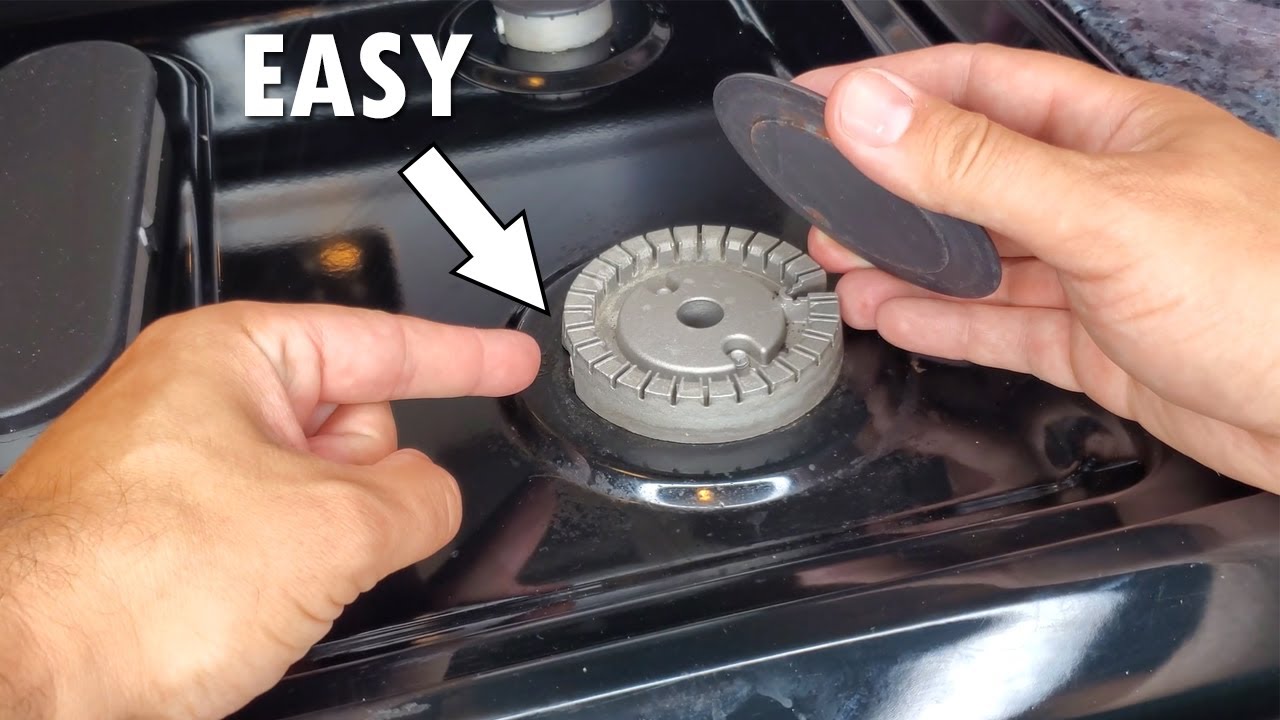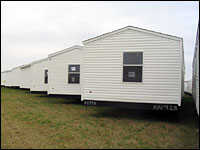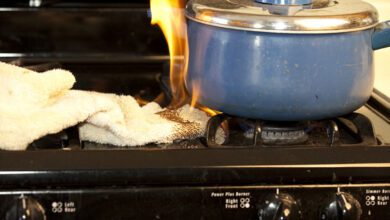Gas Stove Igniter Not Sparking

The gas stove igniter may not be sparking due to a faulty igniter or a lack of gas supply. Is your gas stove igniter failing to spark?
This issue can be caused by a malfunctioning igniter or a gas supply problem. When the igniter is faulty, it will not produce the necessary spark to ignite the gas. Alternatively, if the gas supply is insufficient, the igniter may struggle to spark.
We will explore the potential causes of a gas stove igniter not sparking and provide troubleshooting tips to resolve the issue. Let’s dive in and get your gas stove igniter sparking again.
Understanding The Igniter System
Understanding the igniter system is crucial when dealing with a gas stove igniter not sparking. Learn how this critical component works and troubleshoot the issue effectively without professional help.
How The Gas Stove Igniter Works:
The gas stove igniter system is responsible for creating a spark that ignites the gas in your stove. Understanding how this system works can help you troubleshoot and fix issues when your igniter fails to spark. Here’s how the gas stove igniter works:
- The igniter is typically positioned near the burner in your stove.
- When you turn the stove knob to the “ignition” position, it sends an electrical signal to the igniter.
- The igniter then uses a high-voltage spark to ignite the gas.
- This spark is created by a small electric current flowing through a wire or ceramic piece that’s coated in a heat-resistant material.
- When the electrical current reaches a certain level, it generates the spark needed to ignite the gas.
Components Of The Igniter System:
The igniter system consists of several essential components that work together to create the spark that ignites the gas. Understanding these components can help you identify and fix any issues with your igniter system. Here are the components of the igniter system:
- Igniter electrode: This is the part that actually generates the spark. It is typically a small metal rod or wire coated with ceramic material. The electrode is positioned close to the burner to ensure that the spark ignites the gas.
- Igniter wire harness: The wire harness connects the igniter electrode to the main electrical circuit of the stove. It allows the electrical current to flow from the control knob to the igniter.
- Control module or spark module: This component controls the electrical signals sent to the igniter. It receives input from the stove knobs and sends the appropriate amount of electrical current to the igniter.
- Power source: The igniter system requires a power source to function. This can be either battery-powered or connected to the main electrical supply of your home.
Common Issues That Could Cause The Igniter To Stop Sparking:
There are various issues that can cause the gas stove igniter to stop sparking. Understanding these common issues can help you troubleshoot the problem and restore the functionality of your igniter. Here are some common issues that could cause the igniter to stop sparking:
- Igniter electrode is dirty or damaged: Over time, the igniter electrode can accumulate dirt, grease, or food debris, preventing it from generating a spark. Additionally, if the electrode is damaged or worn out, it may not work properly.
- Faulty control module: If the control module responsible for sending signals to the igniter malfunctions, it may not supply the necessary electrical current, resulting in no spark.
- Loose or damaged wire connections: Loose or damaged wire connections can interrupt the flow of electricity to the igniter electrode, preventing it from sparking.
- Power source issues: If your igniter system is battery-powered, check if the batteries need to be replaced. If it is connected to the main power supply, ensure that there are no electrical issues or tripped circuit breakers.
- Moisture or oil buildup: Excessive moisture or oil buildup around the igniter electrode can interfere with the spark generation process.
- Age or wear: Like any other appliance component, the igniter system can wear out over time due to age or frequent use. A worn-out igniter may not be able to generate a spark consistently.
Remember, if you encounter any issues with your gas stove igniter, it’s always best to consult the manufacturer’s instructions or seek professional help.
Check For Power Supply Issues
Experiencing a gas stove igniter not sparking? Check for power supply issues. Ensure to inspect the gas supply and connections for any interruptions or deficiencies.
Gas stoves are a convenient and efficient way to cook, but when the igniter fails to spark, it can be frustrating. One common cause of this issue is power supply problems. By checking for power supply issues, you can quickly identify and solve the problem.
Here are a few steps you can take to ensure that your gas stove is getting the power it needs:
Ensuring The Stove Is Properly Plugged In:
- Check the power cord of your gas stove and make sure it is securely plugged into a functioning electrical outlet.
- If your stove is plugged into a power strip or surge protector, ensure that it is properly connected and receiving power.
- Look for any signs of damage or wear on the power cord. If it appears damaged, it may need to be replaced.
Checking The Circuit Breaker Or Fuse Box:
- Locate your home’s circuit breaker or fuse box and check if any relevant switches or fuses have tripped or blown. If so, reset the breaker or replace the fuse.
- Gas stoves typically require a dedicated electrical circuit, so make sure the circuit breaker is specifically labeled for the stove.
- If the breaker or fuse continues to trip or blow, it may indicate a more serious electrical issue. In such cases, it is best to consult a professional electrician.
Testing The Electrical Outlet:
- Use a voltage tester or plug in another electrical device to test the outlet. If the outlet is not providing power, it may be the cause of the igniter issue.
- If the outlet is not working, check if any nearby GFCI (Ground Fault Circuit Interrupter) outlets have tripped. Resetting them may restore power to the affected outlet.
- In case the outlet is functioning properly, inspect the prongs of the stove’s power cord for any damage or corrosion. Clean or replace if necessary.
By following these steps, you can determine whether power supply issues are interfering with your gas stove’s igniter. Fixing these problems can often resolve the ignition problem, allowing you to get back to cooking in no time. If the issue persists even after addressing power supply concerns, it may be prudent to seek professional assistance for further troubleshooting and repair.
Inspecting The Igniter Electrode
Inspecting the igniter electrode is essential when your gas stove igniter is not sparking. Check for any dirt or damage on the electrode to ensure a proper circuit and efficient ignition of the gas stove. Regular maintenance can save you from the hassle of a malfunctioning igniter.
When your gas stove igniter stops sparking, it can be frustrating, especially when you’re trying to prepare a meal. However, before calling for professional help, there are a few simple steps you can take to inspect the igniter electrode and potentially resolve the issue yourself.
Removing The Burner Cap And Grates:
- Begin by turning off the gas supply to the stove and allowing the burners to cool down completely.
- Carefully remove the burner cap and grates from the stove, ensuring you remember their correct placement for reassembly later.
Identifying The Igniter Electrode:
- Once the burner cap and grates have been removed, locate the igniter electrode. It is a small, metal component positioned near the burner head.
- Take a close look at the electrode for any visible signs of damage, such as cracks or bent prongs. These issues can interfere with the spark and prevent ignition.
Cleaning The Igniter Electrode:
- To clean the igniter electrode, gently use a soft-bristled brush to remove any dirt, debris, or residue that may have accumulated.
- Ensure that the tip of the electrode is clean and free from any obstruction that could hinder the spark.
- Make sure not to use any abrasive cleaners or materials that could damage the electrode’s surface.
By following these simple steps to inspect and clean the igniter electrode, you may be able to troubleshoot and resolve the issue of a non-sparking gas stove igniter. Remember to exercise caution when working with gas appliances and seek professional assistance if you are uncertain or uncomfortable performing these tasks.
Testing The Igniter Switch
Having trouble with your gas stove igniter not sparking? One way to diagnose the issue is by testing the igniter switch to determine if it’s faulty or not. By following a few simple steps, you can easily troubleshoot and fix the problem yourself.
Locating The Igniter Switch
- The first step in testing the igniter switch is to locate it on your gas stove. The igniter switch is usually located behind the control panel or on the front of the stove.
- Look for a small button or switch that is connected to the burner that is not sparking. This is the igniter switch that needs to be tested.
Checking For Continuity Using A Multimeter
- To check if the igniter switch is faulty, you can use a multimeter to test for continuity.
- Start by turning off the gas supply and unplugging the stove for safety.
- Set the multimeter to the continuity mode.
- Remove the wires connected to the igniter switch terminals.
- Connect the multimeter leads to the terminals of the igniter switch.
- Press the button or turn the switch on the igniter switch.
- If there is continuity, the multimeter will make a sound or display a reading of zero. This indicates that the igniter switch is working properly.
- If there is no continuity, the igniter switch is faulty and needs to be replaced.
Replacing A Faulty Igniter Switch
- If you have determined that your gas stove’s igniter switch is faulty, you will need to replace it.
- Start by ordering a replacement igniter switch from your stove manufacturer or a reputable online retailer.
- Make sure to unplug the stove and turn off the gas supply before replacing the igniter switch.
- Remove the control panel or front panel of your gas stove to access the igniter switch.
- Carefully disconnect the wires connected to the faulty igniter switch and remove it from its mounting.
- Install the new igniter switch in place of the old one, making sure to connect the wires properly.
- Reassemble the control panel or front panel of your stove.
- Plug in the stove and turn on the gas supply to test the new igniter switch.
Testing the igniter switch is a crucial step in troubleshooting a gas stove igniter that is not sparking. By locating the switch, checking for continuity using a multimeter, and replacing a faulty switch if necessary, you can resolve the issue and get your gas stove working again.
Checking The Igniter Wiring
Check the igniter wiring if your gas stove igniter is not sparking. This simple troubleshooting step can help identify and fix the problem, ensuring your stove functions properly.
:
If your gas stove igniter is not sparking, it could be due to an issue with the wiring. Checking the igniter wiring is the first step towards troubleshooting and resolving the problem. Here are the steps to inspect, test, and repair the wiring connections:
Inspecting The Wiring Connections To The Igniter:
- Visually examine the wiring connections to ensure that they are secure and not loose.
- Look for any signs of damage or wear on the wires, such as fraying or exposed copper.
- Check that the connections are clean and free from any dirt or debris that could disrupt the flow of electricity.
- Inspect for any loose or disconnected terminal connections. Ensure that they are properly connected to the igniter.
Testing The Wiring With A Multimeter:
- Use a multimeter, set to the continuity setting, to test the wiring connections.
- Place one probe of the multimeter on the igniter terminal and the other on the corresponding connection or wire.
- If there is continuity between the two, it indicates that the wiring is functioning correctly. If there is no continuity, it signifies an issue with the wiring.
Repairing Or Replacing Damaged Wiring:
- If you notice any damaged or worn-out wires during the inspection, they will need to be repaired or replaced.
- Cut out the damaged section of the wire, ensuring that you have enough length to make a secure connection.
- Strip the insulation off the wire ends using wire strippers, exposing about 1/2 inch of bare wire.
- Twist the stripped wire ends together and secure them with wire nuts or electrical tape.
- Alternatively, if the wire is too damaged, you may need to replace the entire wire or consult a professional for assistance.
Remember, addressing any faulty wiring connections is crucial to ensure the proper functioning of your gas stove igniter. By following these steps, you can identify and resolve the wiring issue effectively.

Credit: inspectapedia.com
Assessing The Spark Module
Having trouble with your gas stove igniter not sparking? Learn how to assess the spark module in order to identify and resolve the issue efficiently.
Identifying The Spark Module In The Control Panel
The spark module plays a crucial role in igniting the gas burners on your stove. It is located within the control panel of your gas stove. To identify the spark module, follow these steps:
- Remove the control knobs: Carefully pull off the control knobs on the stove.
- Remove the control panel cover: You might need a screwdriver to remove any screws holding the control panel cover in place.
- Locate the spark module: Look for a small rectangular or square-shaped component within the control panel. It is usually positioned near the burner control valves.
Verifying The Spark Module’S Functionality
Once you have identified the spark module, it’s important to determine if it is functioning properly. Here’s how you can check its functionality:
- Visual inspection: Examine the spark module for any visible signs of damage, such as burnt components or loose wires.
- Test for power: Ensure that the gas stove is plugged in and receiving power. Use a multimeter to check if there is power reaching the spark module.
- Check the wiring: Inspect the wiring connections between the module and the control panel. Make sure they are secure and not damaged.
- Test the spark electrode: Disconnect the spark electrode wire from the spark module and use the multimeter to check if there is continuity. If there is no continuity, the spark electrode may need replacement.
Replacing A Defective Spark Module
If you have determined that your spark module is defective and needs replacement, here’s how you can do it:
- Turn off the gas supply: Ensure that the gas supply to the stove is completely turned off before proceeding with the replacement.
- Disconnect the wires: Carefully disconnect the wires connected to the spark module. Take note of their positions or label them to avoid confusion during reinstallation.
- Remove the old spark module: Unscrew or unclip the old spark module from the control panel. Remove it from its mounting location.
- Install the new spark module: Position the new spark module in the mounting location and secure it in place.
- Reconnect the wires: Attach the wires to the appropriate terminals on the new spark module, following the notes or labels made during disconnection.
- Test the new spark module: Restore the gas supply and test the functionality of the new spark module by attempting to ignite the gas burners.
By following these steps, you will be able to assess the spark module in your gas stove, verify its functionality, and if necessary, replace a defective spark module. Remember to prioritize safety when working with gas appliances and consult a professional if you are uncertain or uncomfortable with performing these tasks.
Addressing Gas Flow Issues
Having trouble with your gas stove igniter not sparking? Address gas flow issues for a quick fix. Get your gas stove running smoothly again with our helpful tips and troubleshooting techniques.
If your gas stove igniter is not sparking, it could be due to gas flow issues. Here are some steps you can take to address this problem:
Checking The Gas Supply Valve
- Inspect the gas supply valve: Ensure that the gas supply valve is fully open. Sometimes, it may be partially closed, causing a restricted gas flow. Turn the valve counterclockwise to open it.
- Check for gas leaks: Use a solution of soapy water and apply it to the gas valve connections. If you notice bubbles forming, it indicates a gas leak. In such cases, tighten the connection or call a professional for assistance.
Inspecting The Gas Lines For Blockages
- Visually examine the gas lines: Carefully inspect the gas lines for any signs of damage, kinks, or blockages. Look for any debris or foreign objects that may be obstructing the flow of gas.
- Check for blocked vents: Ensure that all the vents, such as the stove burner ports or oven burner openings, are free from any blockages. Use a brush or a thin wire to clean out any dirt or debris that may be causing the obstruction.
Cleaning Or Replacing Clogged Gas Lines
- Clean the gas lines: If you identify any clogs or blockages in the gas lines, clean them using a soft brush or compressed air. This can help remove any dirt or debris that could be hindering the gas flow.
- Replace damaged gas lines: If the gas lines are damaged beyond repair, it may be necessary to replace them. Contact a professional technician to handle the replacement process and ensure the new lines are correctly installed.
By following these steps, you can troubleshoot gas flow issues that may be affecting the spark ignition of your gas stove. Remember, dealing with gas can be dangerous, so if you’re unsure or uncomfortable with any of these steps, it’s best to seek professional help to ensure your safety.
Consulting A Professional
Having trouble with your gas stove igniter not sparking? It’s time to consult a professional for expert assistance. Get the problem resolved quickly and safely by reaching out to a qualified technician who can diagnose and fix the issue efficiently.
Gas stoves are a common fixture in many households, providing efficient and reliable cooking capabilities. However, like any appliance, they can experience issues over time. One such problem is when the gas stove igniter fails to spark, preventing the stove from lighting up and making it impossible to cook.
While some issues can be resolved on your own, there are instances where it’s necessary to consult a professional technician. In this section, we will discuss when it’s appropriate to seek assistance from a professional, the benefits of hiring a qualified appliance repair service, and the estimated cost of repairs and replacements.
When To Seek Assistance From A Professional Technician:
- If you’ve tried basic troubleshooting steps such as cleaning the igniter or adjusting the burner, but the problem persists, it may be time to call in a professional technician.
- When you’re unsure of the underlying cause of the issue, it’s best to leave it to the hands of experts to avoid further damage or potential hazards.
- If you’ve attempted to replace the igniter or any other parts but still can’t get your gas stove to spark, professional help is necessary to diagnose and fix the problem effectively.
Hiring a qualified appliance repair service:
- A qualified appliance repair service specializes in repairing various appliances, including gas stoves, ensuring that the issue is resolved correctly and efficiently.
- These professionals have the knowledge, experience, and tools necessary to diagnose and fix gas stove issues accurately, reducing the risk of further damage.
- By hiring a professional service, you can have peace of mind knowing that the repair will be performed safely, minimizing potential hazards associated with gas-related problems.
Estimated cost of repairs and replacements:
- The cost of gas stove repairs and replacements can vary depending on the severity of the issue and the specific parts that need to be fixed or replaced.
- On average, hiring a professional technician to fix a gas stove igniter can cost between $150 to $300, including parts and labor.
- Keep in mind that the final cost may also depend on the location, availability of technicians, and the type of stove you own.
While you can troubleshoot some gas stove igniter issues on your own, it’s crucial to know when to seek the assistance of a professional technician. Hiring a qualified appliance repair service ensures that the problem is handled correctly and safely.
Remember to consider the estimated costs of repairs and replacements when making a decision.
Tips For Preventing Igniter Issues
Prevent igniter issues by cleaning the gas stove regularly, checking for loose connections, and ensuring the igniter is properly aligned with the burner. Additionally, avoid using excessive force when turning the control knob and replace the igniter if necessary.
Regular cleaning and maintenance:
- Clean the gas stove regularly to remove any dirt, debris, or food particles that may accumulate around the igniter. This can prevent obstruction and ensure proper sparking.
- Use a soft brush or cloth to clean the igniter gently, avoiding harsh abrasives or chemicals that may damage the component.
- Clean the burner heads and ports to prevent clogs that could lead to improper ignition.
Proper handling and usage of the stove:
- Avoid placing excessive weight or pressure on the stove’s control panel, as this can damage the igniter or other components.
- Always handle the stove with care to prevent accidental bumps or knocks that may affect the igniter’s functionality.
- Follow the manufacturer’s instructions for using the stove, including proper adjustments of burners and control settings.
Troubleshooting techniques for minor issues:
- Check the power supply and ensure the gas supply is on. If the stove is not receiving power or gas, the igniter will not spark.
- Inspect the ignition switch to make sure it is in the correct position and functioning properly.
- Verify that the igniter electrode is positioned correctly and not loose or damaged. Adjust or replace if necessary.
- If the igniter sparks but the burner does not light, clean the burner ports and ensure proper gas flow.
- If all else fails, consult the stove’s manual or contact a professional technician for further assistance.
Remember, preventing igniter issues starts with regular cleaning and maintenance, proper handling and usage of the stove, and utilizing troubleshooting techniques for minor issues. By following these tips, you can extend the life of your gas stove and enjoy reliable ignitions when cooking.
Frequently Asked Questions For Gas Stove Igniter Not Sparking
Why Is My Gas Stove Igniter Not Sparking?
The gas stove igniter may not be sparking due to a variety of reasons such as a dirty igniter, loose or damaged wire connections, or a faulty igniter module. It is recommended to check and clean the igniter, ensure proper wire connections, and replace any faulty components if necessary.
How Can I Clean The Gas Stove Igniter?
To clean the gas stove igniter, gently remove any visible dirt or debris with a soft brush or cloth. Avoid using abrasive materials as they could damage the igniter. For stubborn dirt, you can use a gentle cleaner, but make sure to dry the igniter thoroughly before use.
What Should I Do If The Gas Stove Igniter Is Still Not Sparking After Cleaning?
If cleaning the gas stove igniter does not resolve the issue, ensure that the igniter is aligned properly with the burner and positioned close enough to ignite the gas. If the igniter still fails to spark, it may be necessary to replace the igniter or seek professional assistance from a qualified technician.
Can I Replace The Gas Stove Igniter Myself?
Yes, you can replace the gas stove igniter yourself if you have the necessary knowledge and skills. However, it is important to note that working with gas appliances can be dangerous, so it is recommended to exercise caution and follow proper safety procedures.
If you are unsure or uncomfortable with the process, it’s best to seek professional help.
Conclusion
If your gas stove igniter is not sparking, it’s important to address the issue promptly to ensure you can continue cooking meals efficiently and safely. By following the troubleshooting tips mentioned in this blog post, you’ll be able to identify the potential causes of the problem and find appropriate solutions.
Whether it’s a simple fix like cleaning the igniter or replacing the battery, or a more complex issue requiring professional repairs, taking action will help you get your stove back to working order. Remember to prioritize safety by turning off the gas supply and disconnecting the stove before conducting any repairs.
With the information provided in this blog post, you now have the tools to troubleshoot and resolve the igniter not sparking issue on your gas stove. Keep your kitchen running smoothly and enjoy your cooking experience!










